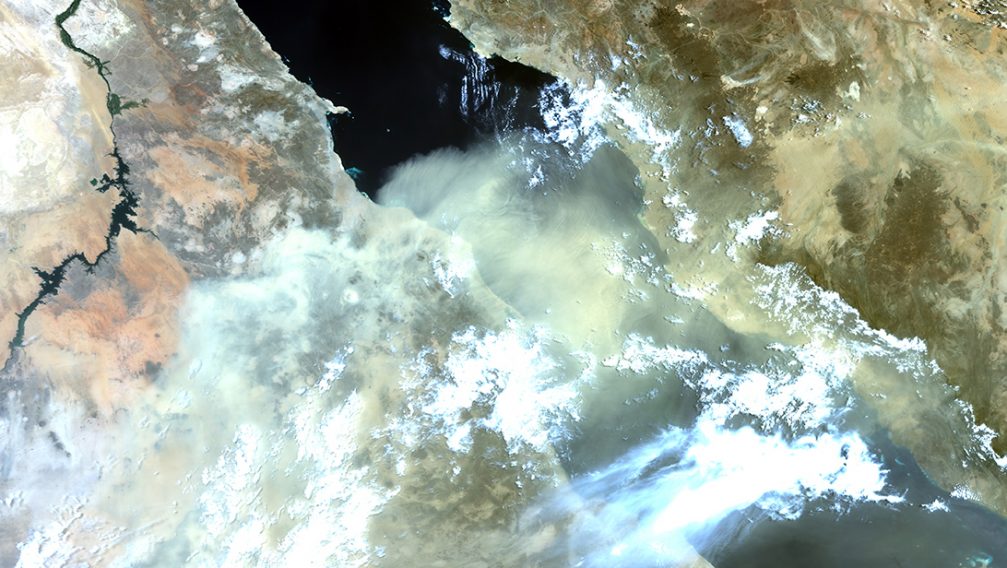Observing and understanding aerosol properties is fundamental for the remote sensing community, yet things get more complicated in cloudy environments.
Pixels located in the transition zone between pure cloud and pure aerosol are often discarded by both aerosol and cloud algorithms, despite being essential for studying aerosol–cloud interactions, which still represent the largest source of uncertainty in climate predictions.
A recently published paper uses Sentinel-3 SLSTR data to investigate some of the issues related to clouds in the aerosol retrieval through an enhanced version of the Combined Inversion of Surface and AeRosols (CISAR) algorithm. After a short training period, the new algorithm no longer relies on an external cloud mask, meaning that cloudy observations and pixels located in the safety zone between clear and cloudy sky will be processed with the same radiative assumptions as cloud-free pixels.
The research has been conducted in the context of CCI Aerosol and EO Science for Society CIRCAS projects.
Luffarelli, M.; Govaerts, Y.; Franceschini, L. Aerosol Optical Thickness Retrieval in Presence of Cloud: Application to S3A/SLSTR Observations. Atmosphere 2022, 13, 691. https://doi.org/10.3390/atmos13050691
Featured image : Dust storm over the Red Sea. Contains modified Copernicus Sentinel data (2016), processed by ESA, CC BY-SA 3.0 IGO

